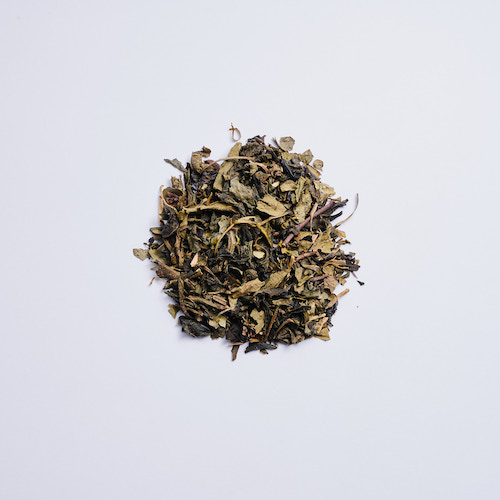Chinese green tea has a rich history, dating back over 4,000 years, making it one of the oldest and most cherished beverages in the world. According to legend, Chinese Emperor Shen Nong accidentally discovered tea in 2737 B.C. when leaves from a nearby plant blew into a pot of boiling water. The resulting infusion delighted him, marking the beginning of tea consumption in China.
Over the centuries, green tea became an integral part of Chinese culture, not only as a daily beverage but also as a symbol of health, wisdom, and peace. Traditional Chinese medicine embraced green tea for its healing properties, using it to promote digestion, balance the body's natural energies, and detoxify. Today, Chinese green tea continues to be appreciated globally for its delicate flavor and numerous health benefits.
Popular Types of Chinese Green Tea
China produces a wide variety of green teas, each with its own unique flavor profile and production methods. Some of the most popular types include:
- Longjing: Hailing from Hangzhou, this is one of the most famous Chinese green teas. Longjing is known for its flat, pan-fried leaves, light green color, and sweet, chestnut-like flavor. It’s prized for its smoothness and lightness, making it a favorite among tea connoisseurs.
- Biluochun: Grown in Jiangsu province, Biluochun is renowned for its tightly rolled leaves and fruity aroma. Its flavor is fresh and delicate, with a slightly floral undertone. The tea's name, meaning "green snail spring," refers to the spiral shape of its leaves.
- Huangshan Maofeng: Originating from the Huangshan (Yellow Mountain) region, this tea is famous for its small, curly leaves covered in fine, silvery down. The taste is mellow, with a hint of sweetness and a fragrant floral note.
- Gunpowder Green Tea: This variety is known for its tightly rolled, pellet-like leaves, which unfurl dramatically when brewed. It has a stronger, more robust flavor compared to other green teas, with a slightly smoky aftertaste.
These varieties are just a glimpse of the many exquisite green teas China has to offer. Each tea reflects the region where it’s grown, as well as the care and skill involved in its production.
How to Brew Chinese Green Tea the Traditional Way?
Brewing Chinese green tea properly is essential to unlocking its delicate flavors and aromas. Traditionally, the process is a mindful ritual that celebrates the simplicity of tea.
- Water Temperature: Green tea is best brewed with water that’s around 75-85°C (167-185°F). Boiling water can scorch the leaves, resulting in a bitter taste. For a traditional brew, allow freshly boiled water to cool for a few minutes before pouring it over the tea leaves.
- Tea-to-Water Ratio: Use about 2 grams of tea leaves (roughly 1 teaspoon) per 150-200 ml of water. Adjust the amount based on your taste preferences.
- Steeping Time: Chinese green tea generally requires a short steeping time, usually between 1-3 minutes. Oversteeping can lead to bitterness, so it’s best to taste the tea periodically to find the perfect balance.
- Multiple Infusions: High-quality Chinese green teas can be infused multiple times. With each infusion, you’ll notice subtle changes in flavor and aroma. The second or third brew is often considered the best in terms of taste.
When brewed carefully, Chinese green tea delivers a refined, soothing experience that reflects its centuries-old tradition.
Can You Drink Chinese Green Tea on an Empty Stomach?
Drinking green tea on an empty stomach may not be ideal for everyone. Green tea contains tannins, which can increase acidity in the stomach, potentially causing discomfort or nausea in some individuals when consumed on an empty stomach. Additionally, green tea’s caffeine content, though lower than coffee, can still lead to feelings of jitteriness or upset stomach if consumed first thing in the morning without food.
For most people, the best time to enjoy green tea is between meals. This allows you to reap its health benefits—like improved digestion, enhanced metabolism, and antioxidant support—without the potential side effects. Drinking green tea with or after a meal can also help buffer its effects on the stomach, making it easier to digest. However, if you prefer to drink tea in the morning, pairing it with a light snack can help mitigate any discomfort.
